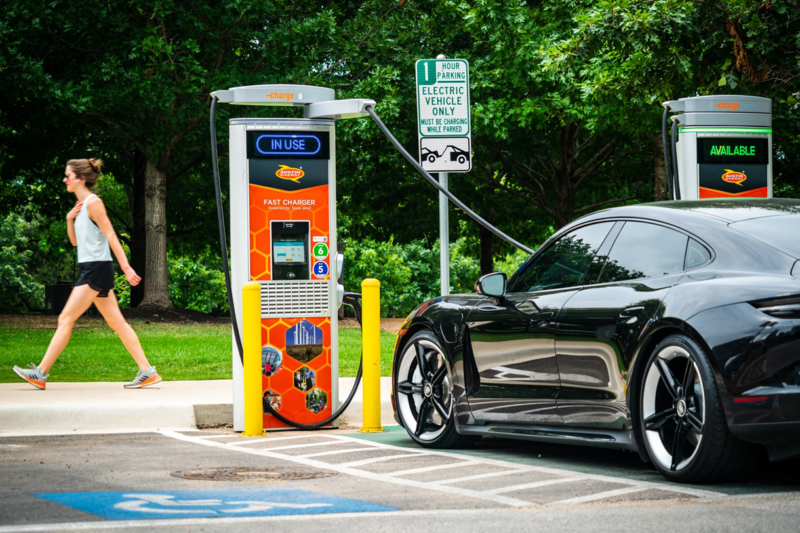The State of Electric Vehicles in 2024: Incentives, Trends, and Technology Gaps
October 14, 2024

The electric vehicle (EV) market has grown significantly over the past few years, and 2024 is shaping up to be a pivotal year for EV adoption. With governments ramping up incentives, new models flooding the market, and charging infrastructure expanding, EVs are becoming more accessible. However, there are still notable gaps in technology and infrastructure that need to be addressed for EVs to truly dominate the road. Let’s dive into the key trends, incentives, and gaps defining the EV landscape in 2024.
Growing EV Incentives: What’s Available in 2024?
To boost EV adoption, governments worldwide continue to offer attractive incentives, including tax credits, rebates, and reduced registration fees. Here are some notable incentives available in 2024:
- Federal and State Tax Credits: In the U.S., federal tax credits of up to $7,500 are available for new EV purchases, depending on the make and model. Many states offer additional credits or rebates.
- EV Purchase Rebates: Countries like Germany, France, and the UK provide substantial rebates for new EV buyers. Germany offers up to €9,000, and France provides incentives based on income and vehicle type.
- Charging Infrastructure Grants: The European Union and other regions are investing heavily in expanding charging infrastructure. Grants and subsidies are available to businesses and municipalities to build new charging stations.
- Special Utility Rates: Some regions offer discounted electricity rates for EV owners to encourage charging during off-peak hours, reducing overall costs.
These incentives lower the financial barrier for EV ownership, making them an attractive option for a broader range of consumers.
Key Trends in the EV Market for 2024
- Diverse Model Range: Automakers are introducing a wider variety of EVs, from budget-friendly compacts to luxury SUVs and trucks. The Audi e-tron and Ford Mustang Mach-E are examples of high-performance electric SUVs gaining popularity. With more choices than ever, consumers can find an EV that suits their needs and budget.
- Battery Advancements and Range Improvements: New battery technology is making EVs more efficient, with ranges now exceeding 300 miles on a single charge for many models. Solid-state batteries, anticipated to hit the market soon, promise even longer ranges and faster charging times.
- Focus on Sustainability and Recyclability: Automakers are increasingly focusing on using sustainable materials in EV production. Companies like Tesla and BMW are investing in battery recycling programs to reduce the environmental impact of their vehicles.
- Increased Charging Infrastructure: Charging networks are expanding rapidly, with companies like Tesla, ChargePoint, and Electrify America adding thousands of new chargers worldwide. Despite this growth, some areas still face gaps in coverage, especially in rural and underserved regions.
Addressing Technology and Infrastructure Gaps
Even with the advances in 2024, there are challenges:
- Charging Infrastructure Gaps: While urban areas have ample charging stations, rural and suburban areas still face limited access. Closing these gaps is crucial for the widespread adoption of EVs, especially for long-distance travelers and rural residents.
- Battery Recycling and Disposal: Although recycling programs are expanding, the infrastructure is not yet fully equipped to handle the volume of used EV batteries. Developing efficient recycling methods will be essential to sustain the growth of EVs without overwhelming waste management systems.
- Grid Capacity and Energy Demand: As EV adoption grows, the strain on electrical grids also increases. Investment in grid upgrades and renewable energy sources is necessary to prevent overloading and to support a sustainable increase in EVs.
- Cost of EV Ownership: While incentives help reduce the initial purchase cost, EVs are still relatively expensive. Reducing manufacturing costs and making EVs more affordable remains a priority for automakers and governments.
How Can EV Manufacturers Close These Gaps?
To address these challenges, EV manufacturers and stakeholders are exploring several solutions:
- Partnerships for Charging Expansion: Collaborations between automakers and charging companies can help expand the network, especially in underserved areas. Tesla’s recent decision to open its Supercharger network to other brands is a positive step in this direction.
- Innovation in Battery Recycling: Advances in battery recycling technology can help alleviate environmental concerns. Companies are investing in research to make battery recycling more efficient and to recover valuable materials like lithium, cobalt, and nickel.
- Adoption of Renewable Energy: Using solar, wind, and other renewable sources to power charging stations reduces the overall carbon footprint of EVs. Governments and private companies are investing in renewable energy projects to support a greener EV ecosystem.
- Public Awareness Campaigns: Educating consumers on the benefits of EVs and available incentives can help drive adoption. As more people become aware of the long-term cost savings and environmental benefits, the demand for EVs is expected to rise.
Conclusion
The EV industry is on a promising path in 2024, with more models, better incentives, and advancements in technology. However, to make EVs a truly mainstream choice, addressing gaps in charging infrastructure, recycling, and cost will be critical. As governments and companies work together to close these gaps, the future of EVs looks bright, bringing us closer to a sustainable, electrified future.





